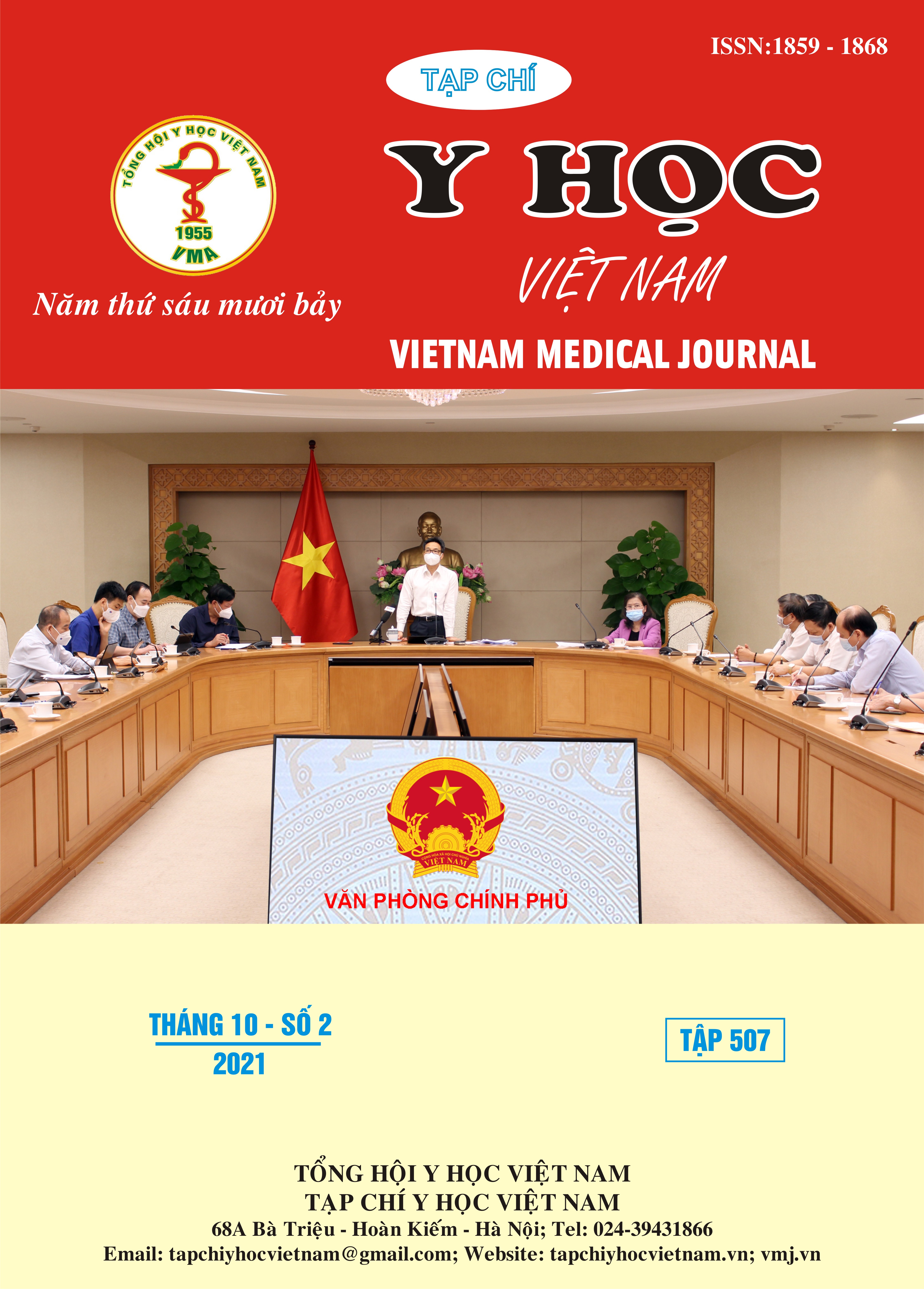RESEARCH FEATURES OF CLINICAL SIGNS RADIOGRAPH AND COMPUTED TOMOGRAPHY (CT) SCANS OF PATIENTS WITH CLOSED DUPUYTREN FRACTURE TREATED WITH OPEN REDUCTION AND INTERNAL FIXATION IN 108 CENTRAL MILITARY HOSPITAL
Main Article Content
Abstract
Objective: Dupuytren fracture is a special type of ankle’s injury which are popular in clinic. The aim of this study is to investigate the clinical features and radiograph features and computed tomography (CT) scans of these fracture. Patients and methods: The data of 38 patients with closed Dupuytren fracture from September 2015 to June 2020, who were treated with open reduction and internal fixation in 108 Central Military Hospital were retrospectively analyzed. There were 22 males and 16 females, the average age was 46.26 years (range, 22 to 72 years), the fractures occurred on the left side in 23 patients and on the right side in 15 patients. The cause of injuries were traffic accidents in 20 patients, labor accident in 2 patients, and falling injury in 13 patients, sports injury in 3 patients. All patients underwent A-P and lateral X‐ray examinations of the ankle. CT-scan of the ankle was performed in 20 patients of trimalleolar fractures. The features of clinical signs, radiograph and computed tomography (CT) scans were recorded and analyzed. Results: 20 patients had triple trimalleolar fractures. 17 patients had bimalleolar fractures and 1 patient had simple lateral malleolar fracture. There were 2 patients with type I fracture, 8 patients with type II fracture, 4 patients with type III, 2 patients with type IV fracture according to the Bartonicek classification of posterior malleolus fracture. There were 23 patients with type B and 15 patients with type C according to the Weber classification of malleolus fracture. The syndesmosis injury with lateral translation of the talus was shown in all patients. The common injury mechanism was foot external rotation (33 out of 38 patients). The fracture of the posterior malleolus was diagnosed with oblique fracture in lateral X-ray in 20 of 20 patients had posterior malleolus, with a double density in A-P X-ray in 4 patients, with a light mountain in A-P X-ray in 16 patients. CT-scan shown impaction, interposed fragments, and significant displacement of posterior malleolus just above the articular surface. Conclusions: Dupuytren fracture is characterized by fractures of the lateral malleolus, fractures of the medial malleolus or rupture of Delta tendon and widen syndesmosis, with or without posterior malleolar fracture. External rotation is the main injury mechanism. This fracture was diagnosed with X‐rays but it had some limitations in the diagnosis of posterior malleolar fractures, and CT examinations should be performed to evaluate the posterior malleolar fracture.
Article Details
Keywords
Dupuytren fracture, bimalleolar fracure, trimalleolar fracture
References
2. Verhage S. (2019), Management of the posterior malleolus in trimalleolar fractures. 179, Leiden University, the Netherlands.
3. Karande V., Nikumbha V.P., Desai A. el all. (2017), “Study of surgical management of malleolar fractures of ankle in adults”, Int J Orthop Sci, 3(3), 783–787.
4. Bartoníček J., Rammelt S., Tuček M. el all. (2015), “Posterior malleolar fractures of the ankle”, Eur J Trauma Emerg Surg, 41(6), 587–600.
5. Ma Ngọc Thành (2010), Đánh giá kết quả phẫu thuật gãy kín mắt cá chân tại bệnh viện hữu nghị Việt Đức, Luận văn thạc sĩ y học đại học y Hà Nội.
6. Đỗ Tuấn Anh (2016). Kết quả phẫu thuật gãy kín xương mắt cá chân ở người trưởng thành tại bệnh viện Hữu nghị Việt Đức. Luận văn thạc sĩ y học đại học y Hà Nội.
7. SooHoo N.F., Krenek L., Eagan M.J. et all (2009). “Complication Rates Following Open Reduction and Internal Fixation of Ankle Fractures”. JBJS, 91(5), 1042–1049.
8. Samuel B. Adams., David. M. Tainter, Michel A. Taylor (2020) “‘Malleolar Fractures and Soft Tissue Injuries of the Ankle’”, Skeletal Trauma, 6 Edition; Chapter 66: 2446- 2484.


